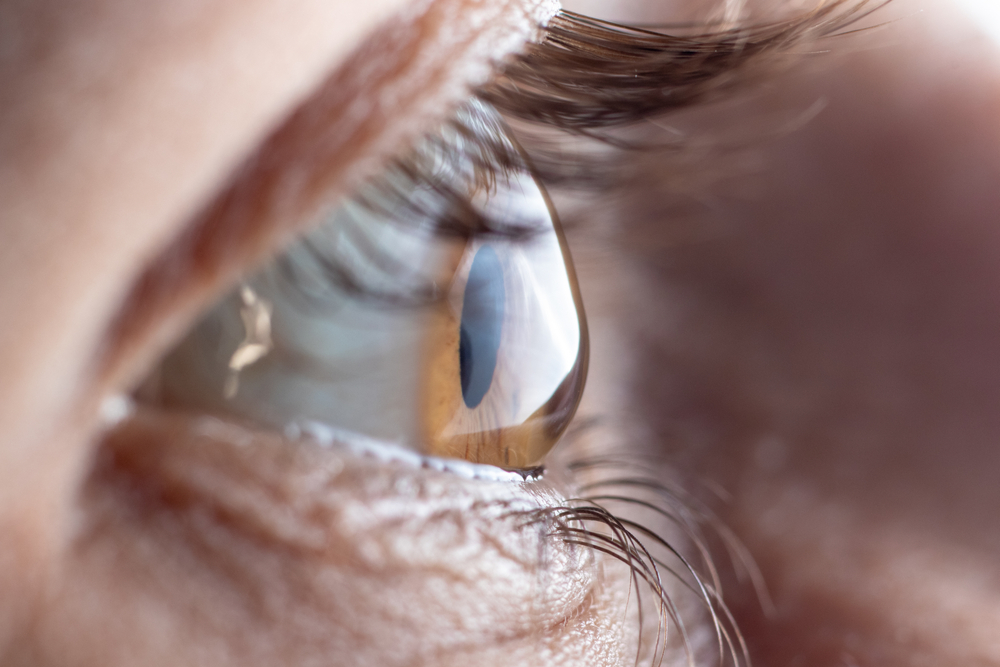
Astigmatism is a common eye condition characterized by an irregular curvature of the eye's cornea or lens. This curvature interferes with light focusing on the retina, leading to blurred or distorted vision. Astigmatism often coexists with other vision problems like myopia (nearsightedness) and hyperopia (farsightedness). While many people are born with this condition, others may develop it later in life due to various factors.
Contrary to popular belief, astigmatism is not an eye disease; it's simply a refractive error like nearsightedness and farsightedness. It doesn't lead to complete vision loss, but it can significantly affect your quality of life if left untreated.
What Causes Astigmatism?
The exact cause of astigmatism is unknown. However, it is generally believed to be largely hereditary. If one or both of your parents have astigmatism, there's a high chance you'll have it too. Other risk factors include eye diseases, trauma or surgery to the eye, and excessive near work.
The main culprit behind astigmatism is the shape of your cornea or lens. In a normal eye, the cornea and lens are perfectly round, allowing light to bend (refract) evenly and focus directly on the retina. But in an astigmatic eye, the cornea or lens is more oval-shaped, causing light to refract more in one direction than the other. This results in a blurred or distorted vision.
Symptoms of Astigmatism
The symptoms of astigmatism can vary from person to person. Some people may not experience any noticeable symptoms, while others may suffer from blurred or distorted vision at all distances. Other common symptoms include headaches, eye strain, difficulties with night vision, and the need to squint to see clearly.
It's worth noting that these symptoms can also result from other vision problems or underlying health conditions. If you experience any of these symptoms, it's crucial to get a comprehensive eye examination to establish the root cause.
How is Astigmatism Diagnosed?
Astigmatism is diagnosed through a comprehensive eye examination conducted by an optometrist or ophthalmologist. This examination typically involves a series of tests such as visual acuity test, keratometry, refraction, and corneal topography.
The visual acuity test measures the sharpness of your vision. You'll be asked to read letters on an eye chart placed at a specific distance. The keratometry measures the curvature of your cornea, while the refraction test determines your eye's refractive error. Finally, the corneal topography maps out the surface of your cornea to identify any irregularities.
Different Methods of Astigmatism Correction
Astigmatism correction is primarily achieved through the use of corrective lenses or surgery. The goal is to correct the uneven curvature of your cornea or lens to allow light to focus properly on your retina. The choice of treatment largely depends on the severity of your astigmatism, your age, overall eye health, and lifestyle.
Lenses for Astigmatism Correction
Corrective lenses for astigmatism come in two main types: eyeglasses and contact lenses. Eyeglasses are the simplest and safest way to correct astigmatism. They work by compensating for the irregular shape of your cornea or lens, allowing light to focus correctly on the retina.
Contact lenses, on the other hand, directly conform to the shape of your eye, providing a wider field of view and less visual distortion. There are two types of contact lenses for astigmatism: rigid gas-permeable (RGP) lenses and toric lenses. RGP lenses maintain their shape, therefore correcting the shape of your cornea, while toric lenses have different powers in different meridians to compensate for the irregular curvature.
Surgery for Astigmatism Correction
Surgical procedures for astigmatism correction include LASIK (Laser-Assisted In Situ Keratomileusis), PRK (Photorefractive Keratectomy), and LASEK (Laser-Assisted Sub-Epithelial Keratectomy). These procedures reshape the cornea using a special laser, thereby correcting the refractive error.
The choice between glasses, contact lenses, and surgery depends on various factors, including your age, lifestyle, overall eye health, and personal preferences. You should discuss these options with your eye doctor to determine the best solution for you.
Living with Astigmatism Post-Correction
Living with astigmatism post-correction involves regular follow-up appointments with your eye doctor to ensure your vision remains stable. You may need to tweak your prescription or adjust your lens type over time.
It's important to note that while corrective lenses and surgery can significantly improve your vision, they may not give you perfect vision. You may still experience some visual disturbances, especially in low light conditions. However, these disturbances should be much less severe than before correction.
Correct Your Astigmatism Today
Astigmatism is a common vision problem caused by an irregular-shaped cornea or lens. It results in blurred or distorted vision, which can be corrected with glasses, contact lenses, or surgery. Living with astigmatism post-correction involves regular eye check-ups to monitor your vision. While astigmatism correction may not provide perfect vision, it can significantly improve your quality of life.
If you suspect you have astigmatism, contact Eye Care Center at our Maple Grove, Maplewood, or Fridley, Minnesota offices. Call (763) 420-6981, (651) 777-3555, or (763) 308-8440 to schedule an eye exam today.

















